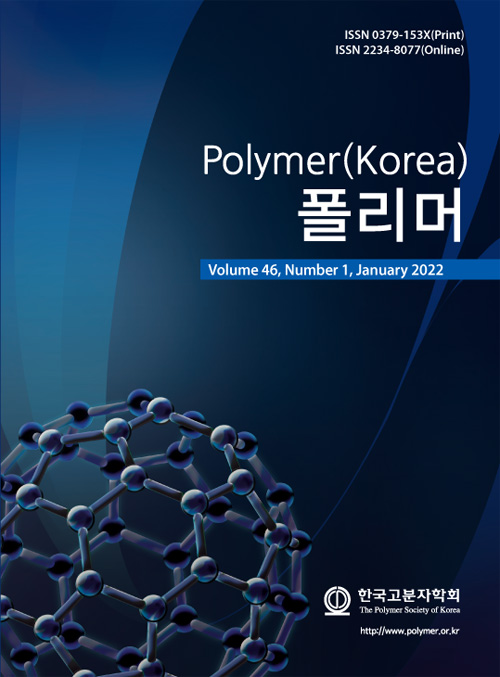- Solvent Size-Dependent Structure of Diblock Copolymer Micelles in n-alkanes
Department of Chemical Engineering, Hongik University, Seoul 04066, Korea
- 알칸 용매 내에서 용매 크기에 따른 블록공중합체 미셀 구조 연구
홍익대학교 화학공학과
Reproduction, stored in a retrieval system, or transmitted in any form of any part of this publication is permitted only by written permission from the Polymer Society of Korea.
The solvent size dependence of micellar structure formed by poly(styrene-b-ethylene-alt-propylene) (PS-PEP) block copolymer in n-alkane (n = 8, 10, 12, 14, 16), selective to the PEP block, was investigated using small-angle x-ray scattering and static light scattering (SLS). As the molecular weight of n-alkane decreases, the estimated Flory-Huggins interaction parameter between the solvent and the PS blocks increases, but the solvent penetration into the PS core becomes feasible due to the solvent entropy effect. This study reveals that the systematic control of oil molecules can tune the micellar structure and critical micelle temperature.
Poly(styrene-b-ethylene-alt-propylene)(PS-PEP) 블록공중합체는 알칸 용매 내에서 PS 코어와 PEP 코로나를 갖는 나노미터 크기 미셀을 형성한다. 본 연구에서는 소각 X선 산란법(SAXS)과 정적 광 산란법(SLS)을 이용하여 n-alkane(n=8, 10, 12, 14, 16) 내에서 용매 크기에 따른 PS-PEP 미셀의 구조를 분석하였다. 이론적으로 오일의 분자량이 작을수록 고분자와의 계산된 Flory-Huggins 상호작용 파라미터가 증가하지만, 용매의 엔트로피 효과에 의해 용매 분자가 미셀 코어로 쉽게 침투할 수 있다. 따라서, 알칸 유기용매의 분자량 조절을 통해 미셀의 구조 및 임계 미셀 온도를 체계적으로 제어할 수 있다.
Keywords: poly(styrene-b-ethylene-alt-propylene), block copolymer micelle, self-assembly, small-angle X-ray scattering, static light scattering.
- Polymer(Korea) 폴리머
- Frequency : Bimonthly(odd)
ISSN 0379-153X(Print)
ISSN 2234-8077(Online)
Abbr. Polym. Korea - 2023 Impact Factor : 0.4
- Indexed in SCIE
 This Article
This Article
-
2022; 46(1): 135-143
Published online Jan 25, 2022
- 10.7317/pk.2022.46.1.135
- Received on Oct 26, 2021
- Revised on Nov 8, 2021
- Accepted on Nov 8, 2021
 Correspondence to
Correspondence to
- Soo-Hyung Choi
-
Department of Chemical Engineering, Hongik University, Seoul 04066, Korea
- E-mail: shchoi@hongik.ac.kr









 Copyright(c) The Polymer Society of Korea. All right reserved.
Copyright(c) The Polymer Society of Korea. All right reserved.